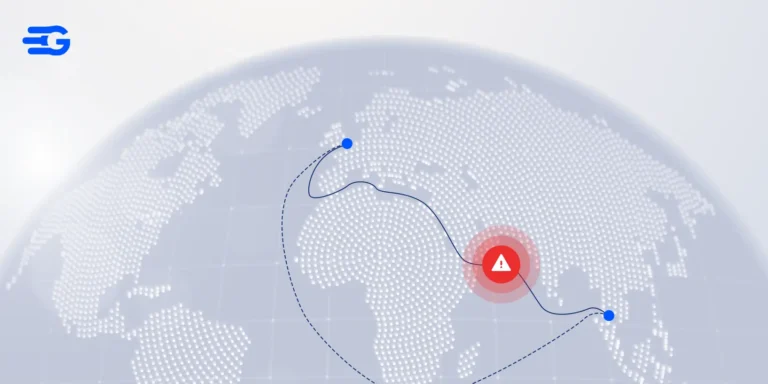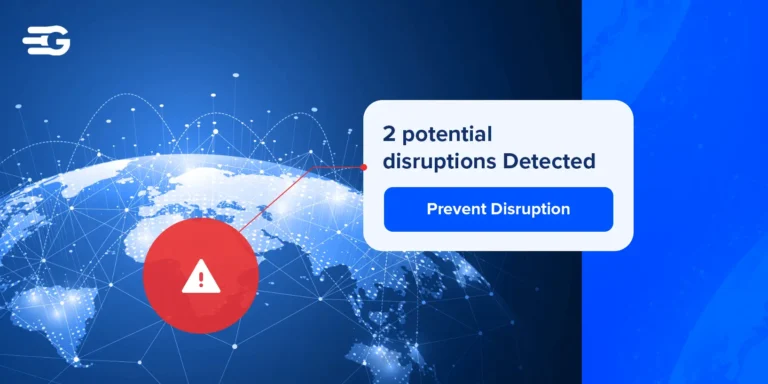5-step Optimization Approach Towards S&OP Success
Most S&OP processes feel like expensive monthly meetings that produce pretty slides but don’t actually improve business results. Finance teams still get surprised by inventory writedowns. Sales keeps promising delivery dates that operations can’t meet. Manufacturing builds products nobody wants while customers wait for items that are out of stock.
The problem isn’t that companies lack S&OP processes – it’s that they’re running administrative theater instead of business optimization. S&OP optimization changes this completely. Instead of treating planning as a necessary evil, it transforms the process into a competitive edge that actually moves the needle on business performance.
Before discussing how, let’s understand the difference first.
What Makes S&OP Optimization Different from Regular S&OP
Most companies mistake having monthly S&OP meetings for having an optimized process, but real optimization focuses on outcomes, not just activities. The difference goes way deeper than meeting frequency or software tools.
| Aspect | Traditional S&OP | S&OP Optimization |
| Primary Focus | Process compliance and meeting schedules | Business outcomes and performance improvement |
| Success Metrics | Forecast accuracy percentages and meeting attendance | Inventory turns, working capital efficiency, customer service levels |
| Technology Approach | Basic spreadsheets and legacy ERP reports | AI-powered analytics, real-time data integration, scenario modeling |
| Collaboration Style | Departmental presentations and consensus building | Shared accountability for business results and joint problem-solving |
| Planning Approach | Static monthly cycles with quarterly updates | Dynamic planning with continuous adjustment capabilities |
| Decision Making | Committee-based approval processes | Data-driven choices with clear ownership and fast execution |
The optimized approach treats planning as strategic capability rather than administrative overhead.
The 5-Step S&OP Optimization Framework
Building effective S&OP optimization requires a systematic approach that fixes the core elements holding most planning processes back. Each step builds foundation for the next while delivering immediate improvements.
Step 1: Establish Single Source of Truth for All Planning Data
Most planning failures start with garbage data.
Sales forecasts come from CRM systems that don’t talk to inventory databases. Manufacturing reports use different product codes than finance systems. Market intelligence sits in email attachments instead of integrated analytics.
That’s why it’s important to establish a single source of truth for all planning data. Key implementation actions:
- Standardize product codes and metrics across departments to eliminate confusion about what’s being measured
- Set up real-time data flows replacing monthly dumps with continuous updates that reflect current conditions
- Establish data governance with clear ownership for data quality and regular auditing processes
- Create data validation rules that catch errors before they mess up planning decisions
- Connect all data sources into unified architecture where ERP, CRM, and supplier systems share consistent information
The goal is to get consistent data that everyone trusts. When sales, operations, and finance teams see identical numbers, arguments about “whose data is right” disappear. Decisions happen faster because nobody questions the foundation.
Step 2: Deploy AI-Powered Demand Forecasting and Analytics
Human intuition works great for small businesses with simple product lines, but complex operations need algorithmic support to spot patterns across thousands of SKUs and multiple markets.
| Forecasting Element | Traditional Approach | Optimized Approach |
| Data Sources | Historical sales only | Sales + market signals + external factors |
| Update Frequency | Monthly batch processing | Real-time continuous learning |
| Accuracy Method | Statistical averages | Machine learning with pattern recognition |
| External Factors | Manual adjustments | Automated incorporation of weather, economics, trends |
| Error Handling | Quarterly reviews | Continuous model improvement |
| Forecast Horizon | Fixed 12-18 months | Dynamic horizons based on product lifecycle |
Advanced analytics layers machine learning on top of historical patterns to incorporate external factors like weather, economic indicators, and social media trends. The system learns from forecast errors to improve accuracy over time. Demand sensing captures short-term signals that traditional monthly forecasts miss entirely.
Step 3: Create Cross-Functional Collaboration Framework
Departments working in isolation create the biggest planning problems. To solve this,
- Establish shared KPIs that align departments toward common business outcomes instead of optimizing individual metrics
- Create regular cross-functional planning sessions where all stakeholders participate from the beginning rather than presenting to each other
- Set up real-time communication tools that notify affected teams immediately when constraints or opportunities emerge
- Design joint accountability mechanisms where teams share responsibility for customer service and financial results
- Build conflict resolution processes that prioritize business outcomes over departmental preferences when trade-offs are required
This way, when supply constraints emerge, affected teams know immediately. As a result, when market opportunities appear, cross-functional response happens within days instead of waiting for next planning cycle.
Step 4: Build Dynamic Scenario Planning Capabilities
Business conditions change faster than monthly planning cycles.
Customer demands shift. Suppliers have problems. Economic conditions create new constraints. Static plans become obsolete before they’re fully implemented.
But you can solve this as well. Here’s a example approach.
- Develop what-if modeling capabilities that show impact of demand changes, supply disruptions, or capacity constraints
- Create automated scenario triggers that run models when actual results deviate significantly from plan
- Build response playbooks for common scenarios like demand spikes, supplier failures, or transportation disruptions
- Establish decision criteria that determine when to execute contingency plans versus riding out temporary variations
- Set up continuous monitoring that tracks leading indicators and adjusts scenarios based on emerging trends
Dynamic models run continuously instead of once per month. When actual results deviate from plan, the system immediately shows impact on future periods. Teams adjust course before small problems become major disasters.
Step 5: Implement Continuous Performance Monitoring
Traditional S&OP optimization treats planning as periodic activity that happens during scheduled meetings. Optimized approaches monitor performance continuously and adjust when needed. Automated dashboards track key metrics and alert teams when intervention is required.
Performance monitoring covers leading indicators like forecast bias and supplier delivery trends, not just lagging results like inventory levels. Early warning systems identify problems while there’s still time to respond effectively.
Feedback loops capture lessons from each planning cycle to improve future performance. What forecasting methods work best for different product categories? Which suppliers consistently deliver on commitments? How do external factors affect demand patterns?
These five steps build on each other to create a comprehensive S&OP optimization foundation that delivers measurable results instead of just better-looking presentations.
How to Measure S&OP Optimization Success
You can’t optimize what you don’t measure properly, and most companies track vanity metrics that don’t reflect actual business performance improvements. Meeting attendance rates and forecast accuracy percentages tell you nothing about whether planning drives better business results.
| Metric Category | Key Indicators | Target Improvement |
| Financial Impact | Inventory turnover rates, working capital efficiency, forecast-driven cost savings | 15-25% inventory reduction, 10-20% working capital improvement |
| Operational Excellence | OTIF delivery performance, production schedule adherence, supplier reliability scores | 95%+ on-time delivery, <5% schedule variance |
| Cross-Functional Alignment | Planning cycle time, decision speed metrics, consensus achievement rates | 50% faster planning cycles, 3x faster decision implementation |
| Customer Impact | Service level improvements, stockout frequency, order fulfillment rates | 99%+ availability for A-items, <2% stockout rates |
These metrics provide clear evidence of whether your S&OP optimization efforts translate into tangible business value and competitive advantage rather than just internal process improvements.
How Can GoComet Help with S&OP Optimization
Most S&OP processes fail because teams can’t see what’s actually happening in their supply chains. GoComet fixes this with real-time freight visibility that turns guesswork into data-driven decisions.
- Multi-modal shipment tracking – See exactly where your freight is across road, rail, ocean, and air instead of relying on carrier promises
- Predictive arrival times – Get accurate ETAs using AIS data and geofencing so your teams can plan with confidence
- Automated data collection – Stop wasting time on manual updates and spreadsheet errors with direct ERP integration
- Cross-functional dashboards – Give your S&OP team shared visibility into costs, delays, and capacity constraints
- Real-time disruption alerts – Know about supply chain issues immediately so you can adjust plans before they impact customers
- Performance benchmarking – Track actual vs planned performance to continuously improve your S&OP process
- Scenario modeling – Run what-if analyses on supply disruptions using live freight data instead of outdated assumptions
GoComet turns S&OP from a monthly guessing game into a continuous optimization process backed by real supply chain performance data.
Conclusion
S&OP optimization is about making better decisions faster with current information. Start with data foundation, add analytical capabilities, and build collaboration gradually. Each step should deliver measurable improvements that prove the value.Focus on the optimization step that addresses your biggest planning pain point first. Quick wins build momentum for larger changes while demonstrating return on investment. Want to see how real-time visibility and AI-powered analytics can transform your planning effectiveness? Check out what GoComet’s platform can do for your S&OP optimization efforts.





